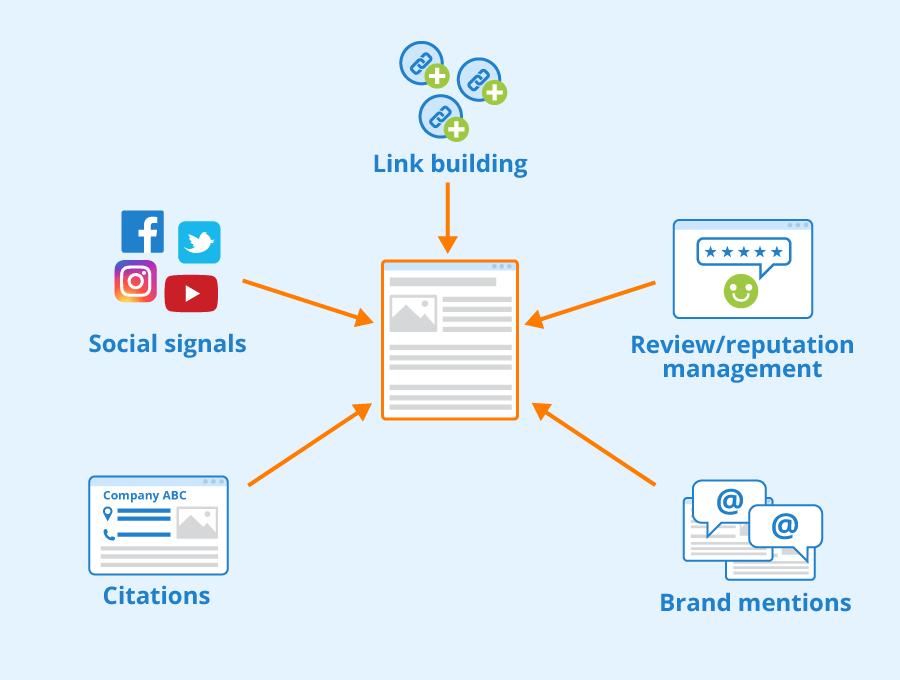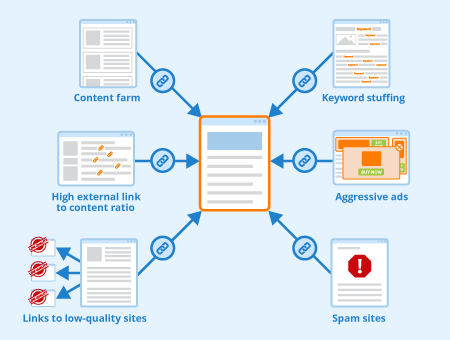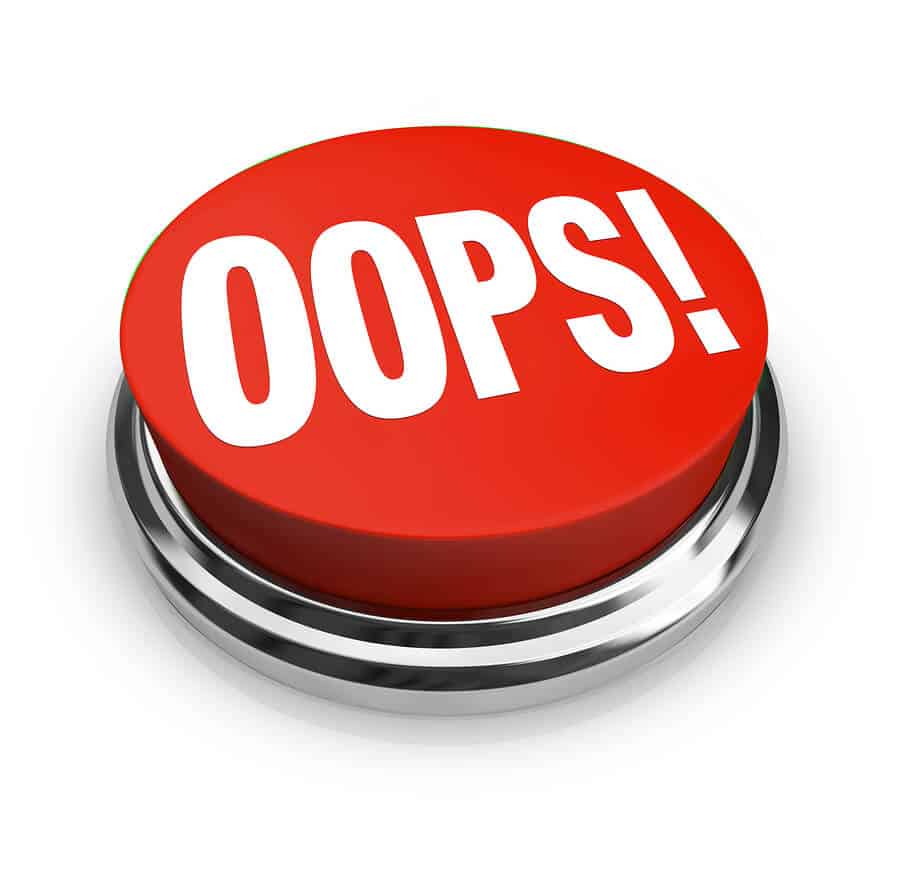
Key takeaways for you – Link Analysis in SEO
| – Link analysis in SEO is like vetting recommendations for a shop, sorting good from bad. – It’s essential for maintaining a healthy link profile, helping identify issues, and eliminating harmful links. – Good link profiles are authoritative and natural, while bad ones are full of unnatural links and can lead to penalties. – Conducting a link analysis involves gathering and evaluating backlinks, fixing broken links, and strategizing for new quality links. – Tools like Google Search Console and Ahrefs aid in this process, and avoiding common mistakes, such as ignoring link context, is key. |
Imagine you’re the owner of a jewelry shop in a busy marketplace.
The number of people who visit and buy from your shop depends on how many people recommend it to their friends and family.
Now, these recommendations are like links that connect web pages.
Just like a famous jewelry shop with many recommendations will attract more customers, a website with many high-quality links will attract more visitors.
On the other hand, a jewelry shop with few or poor-quality recommendations will have fewer customers, just like a website with few or low-quality links will have less traffic.
So just like a jewelry shop owner who dreads terrible reviews, you must dread bad or spammy links.
But how will you know which links are good and which are bad?
That’s where link analysis in SEO comes in handy.
By analyzing the links that point to your website, you can understand how popular your site is among internet users and people from your industry and improve your website’s visibility to potential visitors.
So let’s quickly find out what link analysis is and how to conduct it to improve your website’s visibility!
What is link analysis in SEO?
Link analysis or link profile analysis is reviewing or analyzing the backlinks that point to your website.
But why do we need to analyze the links?
That’s because it is essential to keep your website’s link profile healthy.
A link analysis will help you in two ways.
Firstly, it will help you gauge the problems and the weaknesses in your overall strategy.
Secondly, it will help you find the bad links that may impact your website negatively in the long run.
Before moving forward with understanding link analysis, let me explain to you what a link profile is.
When SEOs talk about a website’s link profile, they refer to the inbound or backlinks pointing to your website.
As per Search Engine Land, your sites link profile includes the following:
Types of backlinks or inbound links
Here, you need to concentrate on the quality of the links instead of the quantity.
In other words, your backlinks should come from authoritative and legitimate websites.
Also, these backlinks should have relevance within the context of the linking page.
You may get tons of links from low-quality spammy websites irrelevant to your site only to get some link juice or link equity.
But in the long run, you may end up getting slapped with a penalty.
The anchor text of the backlinks
Anchor texts are colored clickable links that you can see on any website, which take you to another page. They are called anchor texts because the words in them anchor one website to another.
Anchor texts tell users and search engines what is coming after clicking on them.
Anchor text can be a dicey game, as a huge number of keyword-rich anchor text in your inbound links may look unnatural and spammy to Google.
And Google tries to crack down on these practices by penalizing such sites.
In the manner with which you have acquired them
it‘s an open secret that Google doesn’t like paid links and considers it as link spamming.
According to the search engine giant, the following ways come under link spamming:
- Paying money for links or posts that contain links
- Trading services or goods for links
- Sending a product to someone in exchange for writing about it and including a link.
- Using automated programs or services to create backlinks to your site
- Asking for a link as part of a contract, terms of service, or any such arrangement without allowing a third-party website owner the scope to qualify the outbound link
- Indulging too much in link exchange ( link to me, and I will link to you)
- Text links and text advertising that doesn’t bar ranking credits
- Link from low-quality directories and bookmark sites
- Using advertorials or native advertising that pays for articles that include links. Especially when these links pass credit or links with optimized anchor text in press releases, guest posts, or articles distributed on other sites.
- Comments on forums with optimized links or signatures.
- Keyword-heavy, low-quality, or hidden links are embedded in widgets distributed on different sites.
This means you need to be very careful about how you acquire your backlinks.
More so, Google considers these three factors to prevent SEOs from using aggressive and unnatural link-building tactics to rank higher in the SERPs.
Why do you need to do link analysis?
You need to do link analysis when you are concerned about the quality of backlinks in your link profile.
You can do without a link analysis if you have a negligible amount of bad links in your link profile. But if your link profile has too many of these bad links, you might get penalized for a negative SEO campaign. In that case, doing a link analysis is not a bad idea for you.
But remember, whether you conduct the link analysis once a month or once a quarter depends entirely on the size of your link profile and website.
What is a good link profile?
By now, you must have understood that high-quality links are essential for SEO. You also have understood how important it is to build a strong link profile for your website’s health.
But what is a healthy link profile or a good link profile?
As per Link Building HQ, a healthy link profile is recognized by search engines as authoritative, natural, and non-spammy.
Below are the qualities of a healthy link profile:
- The backlinks must come from high-quality sources. You must get them from websites with high domain authority, page authority, and traffic.
- Also, the anchor text of your backlinks should not be over-optimized. They should be contextual and relevant.
- The backlinks are relevant to your niche and industry.
- The backlinks should be as per Google’s Freshness Algorithm. Google uses this algorithm to give users the most up-to-date results.
- The backlinks should be natural, attracting the users’ attention with helpful and valuable information.
What is a bad link profile?

As I mentioned, Google is not a fan of aggressive and unnatural link acquisition tactics. So if a website’s link profile has too many commercial anchor texts, paid blog links, and fake and irrelevant forum links, Google treats them as unnatural and untrustworthy sources.
So if your link profile has a massive number of these links, you have a bad link profile.
The worst part is your website may have a nosedive due to these bad or low-quality links.
Check these seven links that Google considers bad, as they may lead to a Google Penalty.
Press release links
You can get them easily. All you need to do is write a press release and syndicate it to press release distribution sites.
Initially, there was nothing wrong with getting these press release links.
But like all SEO tactics, this got abused too, and now Google considers it link spamming as it can easily be manipulated. You should avoid press release links that have over-optimized anchor text.
Spammy comments
Commenting on blogs is one of the most abused SEO tactics.
These spammy blog comments led to the creation of nofollow links, which was done to prevent the abuse of the comment section to get SEO benefits.
Cheap and low-quality links
Though they are not part of Google’s guidelines, Low-quality, and cheap links are from irrelevant sites and directories.
Initially, these types of links can help you get some results in terms of SEO, but over time, they can drag you into dangerous waters.
While doing your link profile analysis, if you see a lot of these bad links, it is better to disavow them.
Link from foreign guest books
These links can be placed manually or using an automatic program. Too many of these links can cause a drop in your site’s ranking.
That’s exactly the reason why you should disavow them when in doubt.
Low-quality Private blog network
Once, PNB was a great way to build links.
But not anymore.
Too many of them can plummet your organic traffic to rock bottom.
Additionally, Google can detect them and can punish most PNBs.
Low-quality directories
Submitting to a low-quality directory can harm your site’s ranking in more ways than you can think.
Using relevant directories for natural link-building is okay, especially when doing your local SEO.
Avoid spammy and low-quality directories that can harm your link profile’s health.
How to Conduct Link Analysis
I am sure you have understood the importance of link analysis by now. So, let’s check the steps to perform link analysis on your website.
Collect all the backlinks
You can start by using a link analysis tool to gather a list of all the backlinks pointing to your site. Some popular tools for this purpose are Ahrefs, SEMrush, Majestic, and Moz.
Analyze the quality of backlinks:
Once you have the list of backlinks, you should analyze the quality of each one. Some factors to consider are domain authority, page authority, relevance, and the anchor text used for the link.
Check for broken links:
To check broken links on your website, you need to know what exactly is a broken link.
A broken link, also known as a dead link, is a hyperlink on a website that no longer works because the destination page has been deleted, moved, or changed its URL.
When a user clicks on a broken link, instead of being directed to the intended page, they will receive an error message, such as a 404 error.
Broken links can negatively impact a website’s user experience and search engine optimization (SEO) because they frustrate users.
Search engine bots may interpret them as a sign of poor quality or outdated content. Therefore, it’s essential for website owners to regularly check their websites for broken links and fix them to ensure that their website is user-friendly and SEO-friendly.
Broken links can harm your site’s SEO, so it’s essential to identify them and fix them. Use a broken link checker tool to find any broken links pointing to your site.
Identify bad or toxic links:
I have already talked at length about bad links that can harm your website’s health, ranking, and reputation.
Use a tool like SEMrush or Ahrefs to identify any toxic links pointing to your site.
However, use disavow tools only when links are really problematic, and you cannot fix them.
At least, that’s what Google’s John Mueller advises you to do.
“I’d recommend using the disavow tool more for links that are really problematic which you can’t fix (eg, old paid links), not just because you don’t like the linking site. It makes it a bit easier,” tweeted Mueller when somebody asked him about disavowing the low-quality links to his website.
Create a plan for acquiring new backlinks:
Based on your analysis, create a plan for acquiring new, high-quality backlinks for your site.
This may involve creating new content, reaching out to other websites for link exchanges, or participating in industry-related forums and discussions.
Monitor your progress:
Finally, monitor your progress over time to see if your link-building efforts positively impact your site’s SEO.
Use a tool like Google Analytics to track your site’s traffic and rankings and adjust your strategy as needed.
Now that you know how to analyze your link profile, let’s learn about the tools you can use for the process.
Tools for Link Analysis
Your job of analyzing your link profile becomes much easier with a link analysis tool.
It analyses the links on your website and provides insights into their quality, quantity, and relevance.
Here are some of the most popular link analysis tools, both free and paid:
- Ahrefs – Paid
- SEMrush – Paid
- Moz Pro – Paid
- Majestic – Paid
- Google Search Console – Free
- Google Analytics – Free
- Bing Webmaster Tools – Free
- Linkody – Paid
- Open Site Explorer – Free
- Cognitive SEO – Paid
Common Link Analysis Mistakes to Avoid

By now, I am sure you have got a pretty clear idea about the nuances of link analysis. For a smooth sailing procedure, avoid committing the following mistakes:
Focusing solely on quantity over quality:
It’s important to remember that not all links are created equal.
Instead of focusing solely on the number of links pointing to a site, you must consider the quality of those links.
Links from authoritative, relevant, and high-quality sources are much more valuable than links from spammy or irrelevant sites.
Ignoring anchor text
It’s crucial to analyze the anchor text used in backlinks, as over-optimizing anchor text can lead to penalties from search engines.
Not considering link context
It’s essential to consider the context in which a link appears.
Links from relevant pages that provide helpful information are more valuable than links from irrelevant pages that offer no useful content.
Failing to regularly update and maintain link data
It’s essential to regularly monitor and maintain link data to ensure that links are still active, relevant, and of high quality.
Keeping your link profile healthy means boosting your website’s visibility
When you build a solid authoritative website, you get visibility automatically, and everyone in your niche and industry trusts you.
You need a strong link profile and mindblowing content to get a solid authoritative website.
And doing link analysis occasionally helps you maintain your website’s health.
Though “Link Analysis” sounds complicated, I have already mentioned the process and the tools you can use.
So, are you all set to boost your website’s SEO?
Give link analysis a fling and see the difference yourself.
FAQs
Why are links important for SEO?
Links are essential for the SEO of a website. When other websites link to yours, it’s like they have cast their vote for yours.
Most importantly, it indicates that your content has authority, credibility, and trustworthiness.
The more pages linked to yours, the more votes you get.
Which algorithm is used in link analysis?
Hyperlink Induced Topic Search (HITS) is an algorithm used in link analysis.


